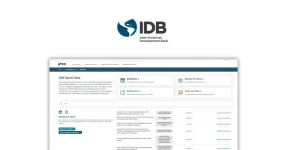Link Digital's Lead Architect for Australia and New Zealand, Shane Davis, has recently acquired his AWS Solutions Architect Professional certification.
In this article, Shane shares his "magic" formula for passing the exam.
I recently acquired my AWS Solutions Architect Professional certification. It took much longer than it should have, and in the end, it wasn’t nearly as difficult as I imagined it to be. The “magic” formula I’d tried to discover for passing was really quite simple in the end. My aim here is to share it with you to make your journey faster and easier than my own.
Why get Certified
If you don’t really understand the significance of certification, why you should be certified, you’re really going to struggle obtaining it. Often it’s not until you’ve conquered an obstacle that it’s true significance becomes clear to you.
For many, they’re pressured into certification because their employer requires or demands it. Alternatively you might have some niggling doubts around the depth of your skills or ability. Negative motivators don’t work anywhere near as well as positive ones. Focusing on the tangible benefits of your accomplishment will propel you forward far more effectively because excuses become ineffective. It’s only yourself that you’re holding back when it’s you that you’re investing in by becoming certified.
For me, the most important reason to get certified is the debt you owe to your clients to offer them the soundest advise possible. AWS encapsulate this in their first leadership principal: “Customer Obsession”. While I was studying for my exam, I came across absolute gems of information, that had I known prior to certain customer engagements, would have provided an even better solution than I implemented. Sure I solved problems, and implemented satisfactory solutions. There was potential there for them to be so much better, had I only known all the finer details.
The second most important reason to get certified is the value you add to yourself. Not only as an asset to your current employer, but as a skilled commodity in the competitive market of highly skilled professionals. If your ambition is C title executive at some point in your career, you need to invest in the value you provide now, and into the future.
Step 1: Prioritize
I’ve worked with AWS services for about 5 years now. I accomplished Associate level certifications quite easily. I accomplished that by just setting aside a couple of weeks after leave to focus on study. Acquiring the first certification felt great. The next two associate levels came fairly easy. I had the base knowledge required, and basic understanding is all you really need to pass the Associate exams.
Two years later, when asked why I didn’t have my professional level certifications, the best I could come up with was, “I’m chipping away at it.” Rightly so, I was asked what does that actually mean? What it means is not giving it the priority it needs to have. It made me realize to actually acquire those certifications I needed to make them an urgent priority. That’s where the importance of why comes in. It motivates you to do something for the right reasons.
When certification isn’t a priority, “real work” will always get in the way. Even when you’re telling yourself you’re working towards it. When I reflected on my efforts, I identified that I’d invested a lot of isolated efforts that collectively weren’t propelling me forward very fast. That’s what happens when certification isn’t an urgent priority. It always ends up on the back burner.
Commit to an exam using your personal finance and you’ll be amazed how fast study becomes your main priority. This shake up ensures that only the most valuable work and email gets done, while you focus far more intently on study. All your spare time becomes study time.
I put up my own money, booked an exam two weeks in advance, and only rescheduled for an extra week. The practice exam revealed I needed just a little bit extra reading to cover of the essentials I needed to pass.
Commit and you will prioritize! This reflects another great AWS Leadership principal, “Bias for Action”.
Step 2: Prepare
Of all the “chipping away” I did over the past couple of years, three things I did were highly beneficial. They were: Speed reading, AWS Study group and sharpening my thinking skills.
Speed Reading:
One comment people frequently make about the AWS Pro level exams is that the questions are long and complicated. If you have a go at the practice exams, you’ll learn first hand what they mean. I took a practice and bombed big time. Not just because of my lack of in-depth knowledge in certain areas, but also because the questions took so long to read and comprehend.
Within a couple of weeks, I taught myself to speed read. There are hundreds of books on the topic so find one that works for you and get your reading speed up. I now read about 3 – 4 books a week. I can actually read faster than listen to an audio book and glean even more out of the content.
AWS Study Group:
The most important thing I got out of the AWS Study group was understanding how to tackle the exam. If you study the questions in the practice exam carefully, you’ll see the correct answer is in the question itself.
Look at the possible answers. One or two will be completely wrong. Another will be missing a critical ingredient that the question poses. Often this will leave you with two similar but opposite options. Look at the question. What domain is it quizzing you on? Cost, availability, security or scalability? Identify the critical element and the conflict will resolve itself.
On one of the practice exams I got 0% on cost because most of the solutions I need to architect at work have to be highly available. I got 100% for that metric in the same practice. To resolve this anomaly, I reviewed all the questions about cost and immediately identified my bias and error. My natural bias toward availability stopped me selecting the obvious answer around cost. On the actual test the very next day, I got 100% for cost.
Thinking Skills:
If you haven’t already read it at least three times, read the Five Elements of Effective Thinking by Edward B. Burger and Michael Starbird. In it you’ll find essential tools for improving your thinking, and for the actual exam you’ll need them, as the pressure of the time constraint kicks in.
An example of an essential thinking is learn the basics deeply. Forget the fluff, and get at the essence of the topic. This will prove invaluable for getting at the essence of the exam questions. Some of the options thrown in are designed to distract your thinking. Red herrings so to speak.
Step 3: Commit to Study
Traditionally I’ve been a very hands on learner. That approach is great for fairly in-depth learning to solve specific problems. In order to pass the exam however, what you need is solid well grounded knowledge of the basics.
I found just by studying the developer guides, and really understanding each key element thoroughly, by taking notes, that got me through the lengthy questions and answers quickly. That sound knowledge allows you to cut through the noise and get at the answer.
There are half a dozen questions I can think of that reflect why good basic knowledge will help you pass. Why site stats suddenly dropped off after enabling CloudFront on a site. Why one AZ saw no traffic during load testing. Simply reading the developer documentation thoroughly and understanding the core concepts will help you pass with surprising ease.
Top Tips:
Once you’ve committed to an exam, schedule time early in your day to study solidly and consistently. Get up early in the morning, do some physical exercise, cold shower and you’ll be amazed how much you absorb in a solid hour of uninterrupted study.
All the AWS documentation is available on Kindle, so my personal approach was download the Kindle version, read it cover to cover, taking hand written notes the whole time. Hand written in your own words is important because it forces you to understand the concept, and the process of hand writing commits the concept to memory using your own imagery and understanding.
Stay committed
If you really want to be a master in your domain, don’t let all that hard earned study go to waste. Once you’ve established a pattern and habit of learning and studying, certification is only the beginning of where you can go. When you’ve firmly grasped those concepts, a world of possibilities opens up. Here’s just a few things I accomplished at Link Digital while studying for exams:
Open Source CloudFormation and OpsWorks stack for our data platform builds: https://github.com/DataShades/opswx-ckan-cookbook
Centeralized SSH Bastion host for SSH access to managed instances
STS based cross account access using management IAM roles
Federated AWS console access from our corporate user directory using Single Sign-on (SSO)
A big challenge in any job and organization is growing your skill set because the scope of work you do on a daily basis is often so narrow. AWS Professional certification is an assured way of broadening your capabilities, encapsulating best practice and leveling yourself up. Not only do you owe that to yourself as a skilled professional. You owe it to your clients.
If at the end of this you’re still fishing for motivation, try reading, “The Obstacle is the Way” by Ryan Holiday.



